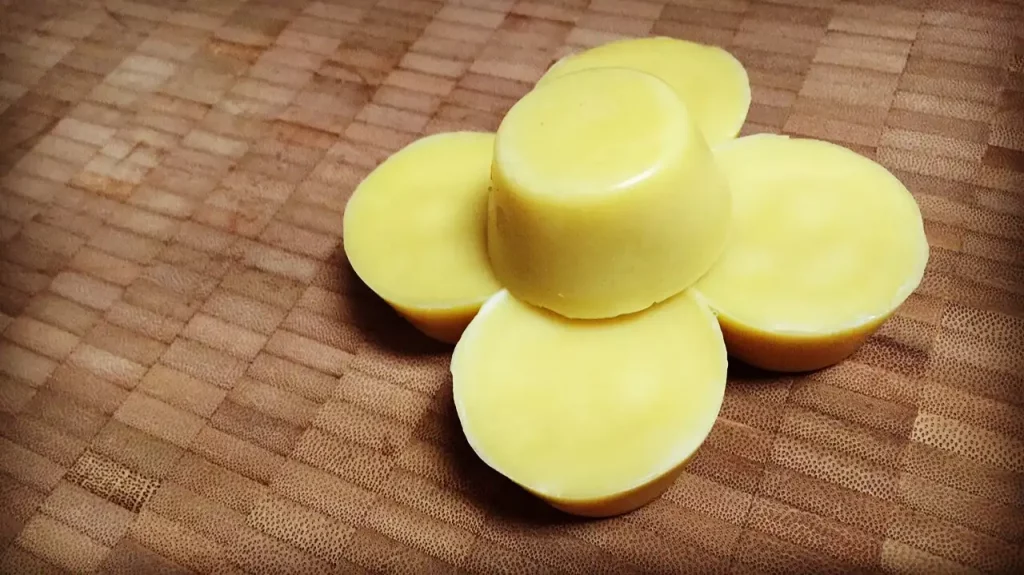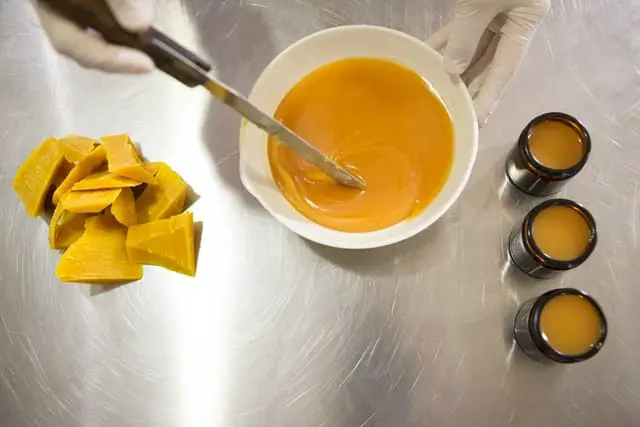Most woodworking projects involve some sort of finish, whether it’s finishing a work table, a rocker, or a bed. But before you apply any finish to your woodworking project, you must first decide what type of finish you want. The two main types of finish are varnish and beeswax. Varnish itself has been around for centuries, but it wasn’t until the 1980’s that varnishes started gaining in popularity.
What is beeswax and varnish? Come to find out, beeswax and varnish are both preparations that are used to coat surfaces. While beeswax is natural, varnish is a synthetic product. Let’s look a little more in-depth.
Beeswax
Beeswax Polish is a product made naturally to act as a barrier of protection for untreated wooden surfaces. Many consumers find this product appealing because it has good sealing qualities. It will last for an extended period while maintaining an aesthetically pleasing finish. The wood finish is easy to maintain and has a natural-looking shine.

Wood varnish
Wood varnish is a product used to protect untreated wooden surfaces. This substance is added to wood and works to provide a uniform film of glossy and glass protection. The term “varnish” is used as an umbrella for wood finishes such as polyurethane, lacquer, and shellac. The chemical composition of varnish makes it thin but durable as it is made from a combination of natural items. Varnish is typically made from resins, oils, and solvents.
Is Beeswax better than varnish?
Beeswax has been designed to use high-carbon paraffin. This ingredient adds the ability to seal and penetrate deep into the wood’s core. It has interior and exterior protective qualities that work to keep the wood safe from moisture and sunlight. An example of this is furniture next to an open window or door. When furniture is always in direct sunlight, this option works better than varnish.
Varnish does have its protective qualities, but it is not a penetrative liquid. It is very thick and often only able to form an outside protective coating for wood. Many consumers find it less aesthetic because it doesn’t penetrate the wood as Beeswax does.
It would help if you chose Beeswax as a primary wood finish over varnish. Its main disadvantage is that it does not last if varnish. This problem means you will need to reapply this more often than you would with varnish. Continuous coating of wood with Beeswax will lead to a more durable surface. It is best to use Beeswax as a polish. Add it in as your final topcoat, i.e., on top of another type of finish.
Is it better to wax or varnish wood?
Both options offer similar durability features; however, it mainly comes down to what you need in the wood. The purpose and life of the furniture will determine which option you use for the wood. If you require a durable and long-lasting finish, you will need to varnish the wood. If the wood is new and up for sale, you can wax it for decorative purposes. This option will keep it safe and embellished while on the purchase floor.
Can I use Beeswax instead of varnish?
It is OK to use Beeswax as a replacement for varnish. This option provides a suitable level of protection for wood. It penetrates and seals from the inside, making it less visible on the exterior of the wood. It is used as a decorative finish and will provide similar defensive qualities as varnish will for a limited period. The Beeswax will need to be maintained regularly with a fresh coating. This requirement makes the application more expensive than varnish.
Why would you use wax instead of varnish?
Beeswax offers the consumer an easy application procedure. This benefit means the maintenance is also straightforward. Varnish is thick and needs to be applied with caution to prevent brush marks from appearing. Beeswax finishes can make the wood resistant to water for a short period. This makes it great for short-term protection, i.e., wood for retail. Varnish will last for at least five years, making it difficult to repair and remove. Beeswax looks better aesthetically. If not applied correctly, varnish can form thick layers that look unpleasant. Beeswax is suitable for wood. It has a nourishing effect on the wood, whilst varnish can damage and suffocate wood. Beeswax dries faster than varnish, making it easy to apply multiple coats quickly. Beeswax is natural and has pleasant aromas that are non-toxic and food-safe.
Disadvantages of beeswax finish
- Beeswax is easy to maintain but difficult to remove, which is challenging when restoring it. Beeswax penetrates deep into the wood; therefore, it requires sanding to remove.
- Beeswax is less durable than varnish.
- Beeswax is mainly decorative and will not be able to guard against scratches.
- Beeswax needs continuous maintenance because of its thin external layer. You will need to apply a new finish regularly, which means it will be more costly in the long term.
- Beeswax is easily affected by heat, which is not suitable for outdoor furniture. Hot weather conditions can melt the exterior layer of Beeswax.
- Beeswax finishes can only be used as a final coat. It is impossible to add another type of coating on top of this one.
How to use Beeswax for wood
To apply Beeswax Polish, you will need to use a lint-free cloth. This is important to help evenly spread the polish across the wooden surface. Make sure you rub the Beeswax into the wooden surface because this product is meant to penetrate the various layers of wood. As with all wood finishes, you will need to follow the direction of the grain. Wait for 3-4 minutes before you buff over the finish. Perform the buffing process with a clean cloth and ensure the excess is removed. Wipe carefully until you have restored the lustre.

Can you use Beeswax on varnished wood?
Yes, Beeswax can be applied over all wood finishes, including varnishes, stains, oils and paints.
Does Beeswax change the colour of wood?
Beeswax brings out the natural colour of the wood by wetting it, therefore, appearing to darken it.
Disadvantages of Beeswax on wood
- Requires repeated maintenance.
- It will not last very long.
- Vulnerable to heat.
- Difficult to remove from wood.
Beeswax wood finishes pros and cons.
Pros
- Easy to apply to wood.
- Temporary water-resistance.
- Aesthetically pleasing finish.
- Nourishing qualities for timber.
- Quick dry.
Cons
- Difficult to remove from wood.
- Not as durable as varnish.
- Vulnerable to scratches.
- Requires continuous re-application.
- Vulnerable to heat.
- 6 Tips To Craft The Perfect DIY Woodworking Project - August 1, 2022
- Six Reasons You Need an Air Filter In Your Wood Workshop - August 1, 2022
- American made wood lathes - May 26, 2022
